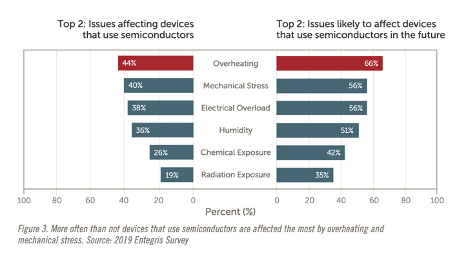Cars and Chips:
THE ACCELERATION OF ELECTRONIC SYSTEMS
As the paradigm shifts from mechanical- to electronic-centric vehicles, carmakers must now meet parts per billion (ppb) failure rates. To achieve these goals and improve long-term reliability, they look to semiconductor manufacturers and the device supply chain.
IC manufacturers are perceived to be most at fault when malfunctions occur in advanced driver assist systems (ADAS). Factually, they are at fault in less than 30% of malfunctions. Failures are more often caused by the driver, performance limitations of the system software, and system design shortcomings. When the failure is caused by a semiconductor device, it is generally due to mechanical stress, overheating, or electrical overload. It is only under operating conditions that these failures may be uncovered. Even with robust, strict testing guidelines in the semiconductor fab, some latent defects are small enough that they will not impact circuit performance, and therefore will not be detected by parametric, burn-in, or functional testing.

Implementing filtration and purification strategies are essential tools for semiconductor fabs to improve device yield, performance, and reliability– reducing the risks to both passengers and carmakers. A modern contamination management strategy should consider three areas of impact:
- Air
- Wafer
- Materials
A collaboration model exists for the full supply chain to achieve new manufacturing standards that are driving the shift in our transportation habits and ultimately increasing safety, mobility, and sustainability. This is the New Collaborative Approach (NCA).
1 The Perceived Reliability of Semiconductors Survey, prepared for Entegris, September 19, 2019, Hanover Research
9000-10808ENT-1119





